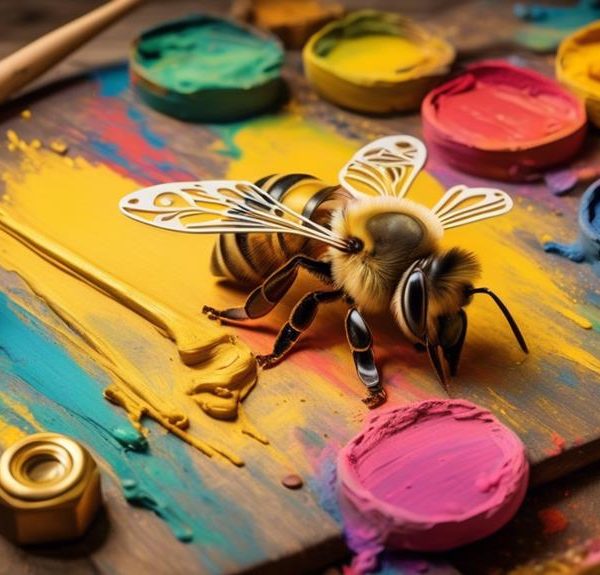Navigate the world of granite care as we delve into the question – can you use beeswax without damaging your precious stone surfaces?
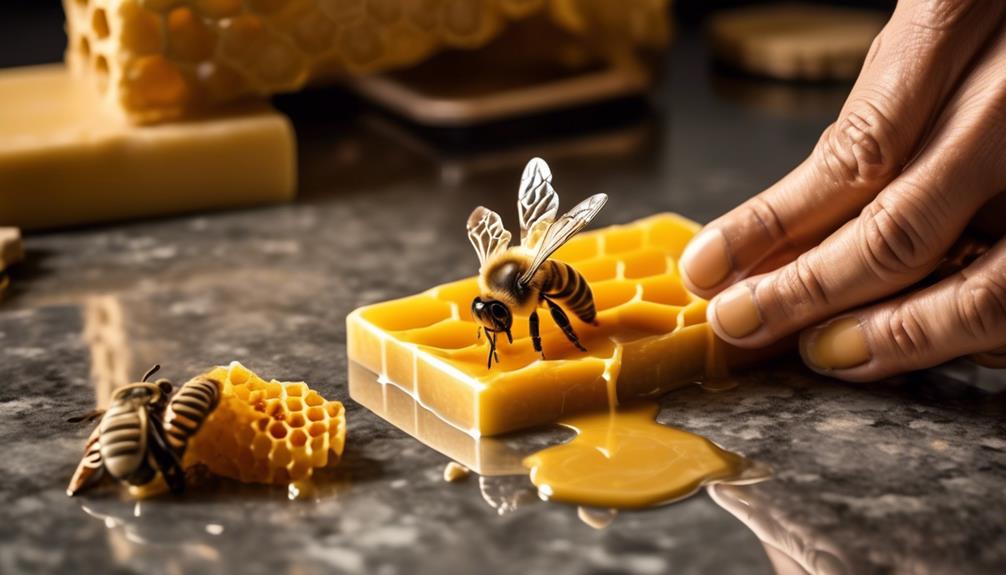
Can You Use Bees Wax on Granite?
Is it really possible to use beeswax on your granite surfaces without causing any harm?
You've probably heard a few theories floating around about this. As someone who cares about maintaining the pristine condition of your granite countertops or floors, it's crucial you get an accurate answer to this question.
In this discussion, we'll explore the properties of beeswax, its effects when applied to granite, and the pros and cons associated with its use. By the end of it, you'll have a clearer understanding, allowing you to make an informed decision on whether beeswax is a friend or foe to your granite surfaces.
Stay tuned.
Key Takeaways
- Granite is a durable and beautiful surface known for its longevity.
- Beeswax can be used on granite to provide a protective barrier against stains and spills.
- Proper application of beeswax includes ensuring a clean and dry surface, applying a thin layer, and buffing off excess wax.
- Alternative products for granite care include specially-formulated sealers, polishes, stone cleaners, and enhancers.
Understanding Granite Surfaces
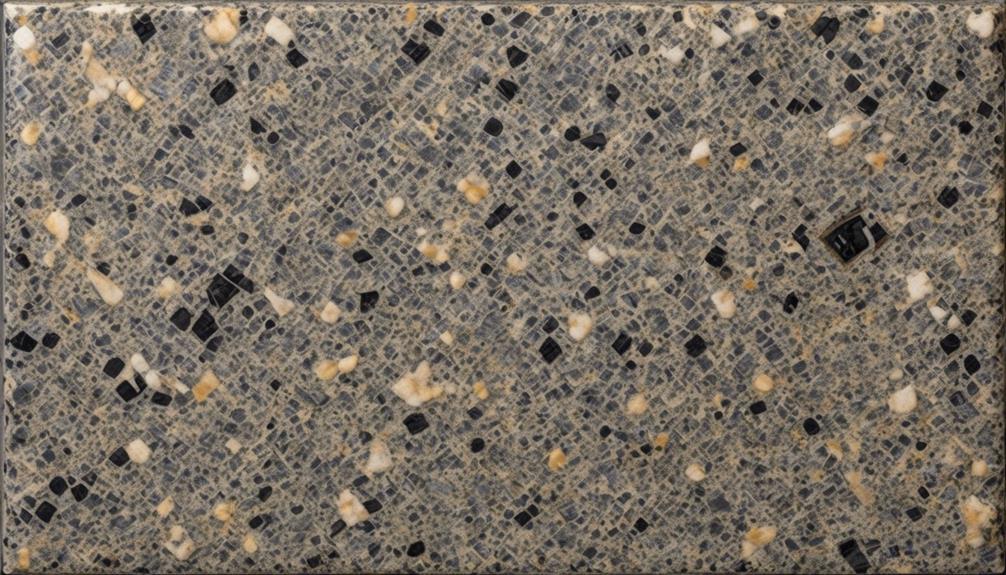
To properly use beeswax on your granite surfaces, you need to first understand the unique properties and maintenance requirements of this natural stone.
Granite, an igneous rock composed of quartz, feldspar, and mica, is renowned for its durability, beauty, and longevity. It's resistant to heat, scratches, and stains, making it an ideal material for countertops and flooring. However, its porous nature means it can absorb liquids, leading to potential staining or damage.
Granite care involves regular cleaning with mild, non-acidic products to prevent damage to the stone's surface. It's also necessary to seal the granite periodically to keep it looking its best and protect it from stains. Sealing fills the pores in the granite, creating a barrier against spills and dirt.
Now, where does beeswax fit into this? Beeswax is a natural sealant and can be beneficial for your granite surfaces. It's a great option if you're looking for a non-toxic, eco-friendly alternative to commercial sealants. But remember, proper application is crucial for the best results. Don't just slather it on; you'll need to apply it carefully and buff it out for a stunning, protective finish.
Beeswax: A Brief Overview
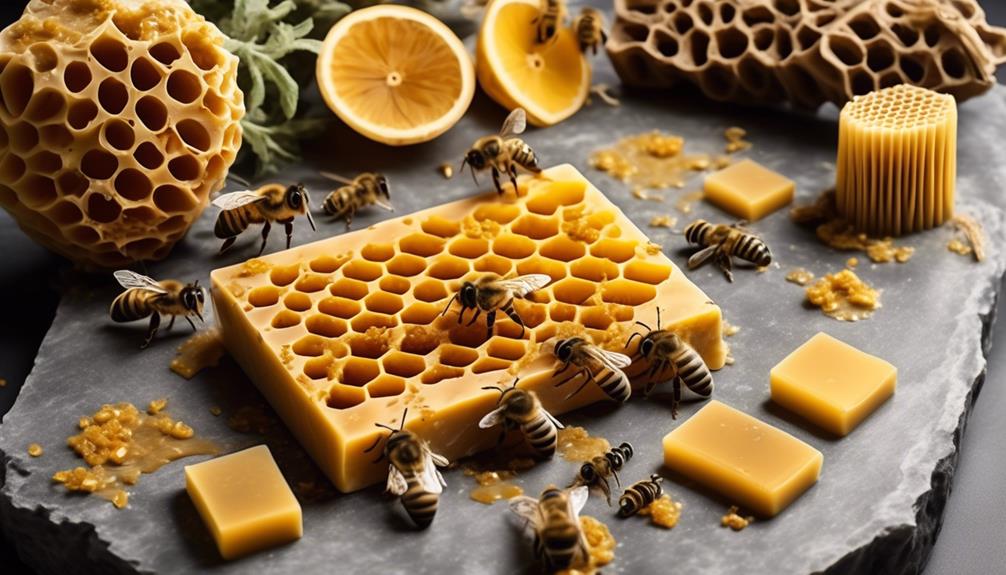
Delving into the world of beeswax, you'll find it's a natural wax produced by honey bees, known for its versatility and range of uses. The creation process involves worker bees, which have glands that convert the sugar contents of honey into wax, excreting it through small pores. This wax then hardens into flakes upon contact with air, which bees collect to build honeycomb cells.
Beeswax is prized for its unique properties. It's exceptionally durable and resistant to degradation, making it an ideal component in numerous applications. Beeswax is widely used in cosmetic products due to its hydrating and protective qualities. It also acts as a thickening agent, emulsifier, and humectant.
In the realm of candle-making, beeswax holds a superior place due to its clean, slow, and smokeless burning qualities. It's also utilized in furniture and shoe polishes, and in the preservation of antiques, due to its protective nature and natural shine.
In the context of using beeswax on granite, it's crucial to understand these properties to determine its suitability. Remember, the key to any application is understanding the product you're working with.
Beeswax Application on Granite
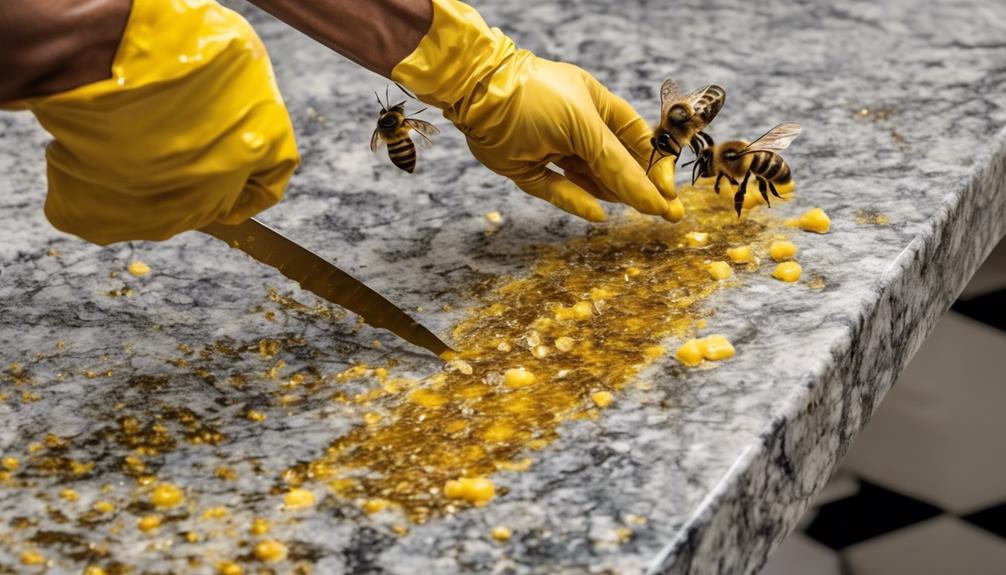
Drawing from the understanding of beeswax's unique properties, let's explore how you can effectively apply it on granite surfaces.
First, you'll need to ensure that the surface is clean and dry. Any dirt or moisture can affect the beeswax's adherence and performance. So, give your granite a thorough wipe-down with a non-abrasive cloth and mild detergent, then let it dry fully.
Once the surface is ready, apply the beeswax evenly. You can use a soft cloth or a brush for this purpose. It's crucial to avoid over-application as it may lead to a sticky surface and attract dust. So, use just enough beeswax to cover the granite in a thin, uniform layer.
After application, let the beeswax sit on the granite for some time – usually around 15-20 minutes. This allows it to penetrate into the granite, enhancing its natural colours and providing a protective barrier.
Finally, buff the surface using a clean, dry cloth. This will remove any excess wax and give your granite a beautiful, polished look.
Ultimately, using beeswax on granite is a cost-effective, natural way to extend the life and beauty of your surfaces.
Pros and Cons of Using Beeswax
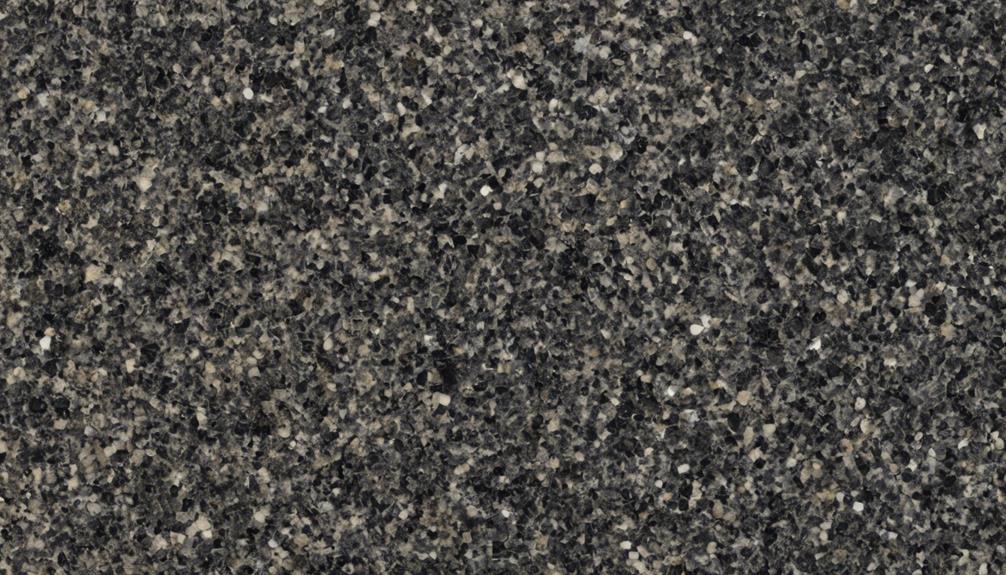
While beeswax offers numerous benefits for your granite surfaces, it's essential to weigh these against its potential downsides.
On the upside, beeswax is an all-natural product, which means it doesn't contain harsh chemicals that can damage your granite over time. It forms a barrier that protects the stone from stains and spills, while also enhancing the natural beauty of the granite by giving it a nice, subtle sheen.
Beeswax is also easy to apply and remove, making it a convenient option for regular maintenance of your granite surfaces. It's also cost-effective, especially when compared to specialized granite care products.
However, there are a few cons to consider. Beeswax can accumulate if not properly buffed off, leading to a dull or cloudy appearance on your granite surface. It's also not as durable as some other sealants, meaning you'll need to reapply it more frequently.
Furthermore, while it does offer some protection, beeswax isn't impermeable to water and oil, so it may not prevent all stains. In the long run, this could lead to potential damage if spills aren't cleaned up promptly.
Alternative Products for Granite Care
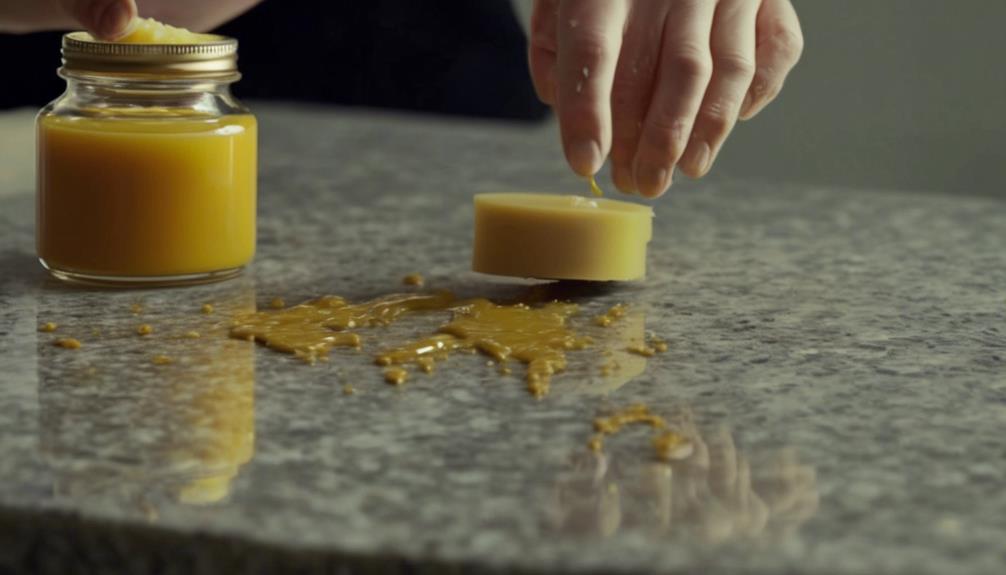
Despite the potential drawbacks of beeswax, there are several other products on the market that can effectively care for your granite surfaces. One popular choice is a specially-formulated granite sealer. This product penetrates the surface of the granite, providing a protective layer against stains and damage. They're easy to apply and often last several months before reapplication is needed.
Another alternative is granite polish. These products are designed to clean your stone while leaving a shiny, polished surface. They're great for routine maintenance and can help your granite look its best.
For daily cleaning, consider a gentle, pH-neutral stone cleaner. These cleaners are designed to remove dirt and grime without harming your granite or its sealant.
Lastly, you can also use a stone enhancer. This product brings out the natural colors and patterns in your granite, making it look more vibrant and attractive.
Frequently Asked Questions
Can Beeswax Be Used on Other Types of Natural Stone Surfaces?
Absolutely, you can use beeswax on other natural stone surfaces. It's not just for granite. Beeswax is great for sealing and protecting many types of stone like marble, limestone, and slate.
It also enhances their natural beauty by giving them a lustrous shine. However, it's important you test a small area first to make sure it gives the desired effect.
How Often Should I Reapply Beeswax on My Granite Surfaces?
You should reapply beeswax to your granite surfaces every six months to a year. It'll depend on the usage and wear of the surface. High traffic areas may need more frequent applications.
Always clean the surface thoroughly before reapplying. Remember, a little beeswax goes a long way, so don't overdo it. And, always buff it well for the best shine and protection.
Regular upkeep can keep your granite looking its best.
Is There Any Specific Brand of Beeswax That Is Recommended for Granite?
Yes, you can use specific brands of beeswax on granite. It's not so much about the brand, but about the purity of the product. You're looking for 100% pure beeswax without any additives or preservatives.
Some recommended brands include Howard Feed-N-Wax and Minwax.
Always remember to test a small area first, to ensure the wax doesn't discolor the granite.
Can I Use Beeswax on Granite Surfaces in My Bathroom?
Absolutely, you can use beeswax on your granite surfaces in the bathroom. It's a natural, non-toxic way to enhance the shine and protect the surface.
However, it's not recommended for heavy-duty sealing as it won't provide the same level of protection as a commercial granite sealer.
It's best to apply it sparingly, let it dry, then buff it out for a nice sheen.
Just remember, it's not a replacement for regular cleaning and sealing.
Are There Any Health Risks Associated With Using Beeswax on Kitchen Countertops?
You're likely safe using beeswax on your kitchen countertops. It's a natural substance, often used in food preparation and cosmetics. There's no known health risks associated with its use on surfaces where food is prepared.
However, always ensure it's pure beeswax without additives. Also, remember to clean your countertops regularly to avoid buildup of any kind, including beeswax.
As with any product, if you notice any adverse reactions, stop use immediately.
Conclusion
In conclusion, while you can use beeswax on granite, it's not the best choice. The benefits, like a shiny finish and water-resistance, are outweighed by the cons, like residue build-up and potential discolouration.
For maintaining your granite surfaces, opt for specially formulated granite cleaners and sealants. They're designed to protect and enhance, without the risk that beeswax presents.
Remember, proper care prolongs the beauty and lifespan of your granite.


